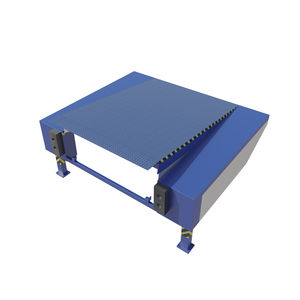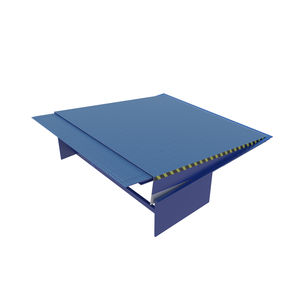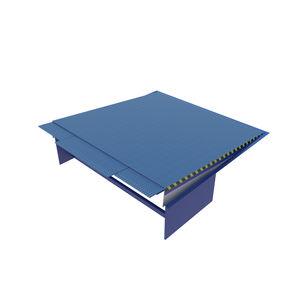
Hydraulic dock leveler PATtelescopic



Add to favorites
Compare this product
Characteristics
- Operation
- hydraulic
- Type
- telescopic
Description
Loading ramp with telescopic lip leveller
The PAT2 loading ramp is a new product of PROMStahl’s wide product range. This top-quality product benefits from over 25 years of experience in designing and manufacturing docking systems.
This ramp is a complete loading system which is mounted in front of a door opening or a building as a self-supporting unit. It consists of a hydraulic dock leveller with a telescopic lip and lateral treads which are reinforced on their bottom side. The PT2 leveller of the PAT2 system is operated at the touch of a button and after exact positioning the telescopic lip automatically follows the movements of the vehicle during the loading or unloading process (automatic floating position). The big advantage of this type of dock leveller is the maximum flexibility of the lip contact length. Thanks to this feature effective loading and unloading even of vehicles that are not completely correctly positioned can be guaranteed and time-consuming and complicated repositioning of the vehicle is not necessary.
The PROMStahl PAT2 systems suggests itself as an extension to an existing building by means of a loading system as the necessary constructional preparation work is limited and operating costs are reduced. The PROMStahl PAT2 system can be installed at various angles (45°, 60°, 75°, 90°, 105°, 120°, 135°) at the front of the building so that it is possible to optimally utilize the available space and to guarantee smooth and efficient loading and unloading operations. The steel elements of the PAT2 system are available either hot-dip galvanized or painted.
Catalogs
*Prices are pre-tax. They exclude delivery charges and customs duties and do not include additional charges for installation or activation options. Prices are indicative only and may vary by country, with changes to the cost of raw materials and exchange rates.







